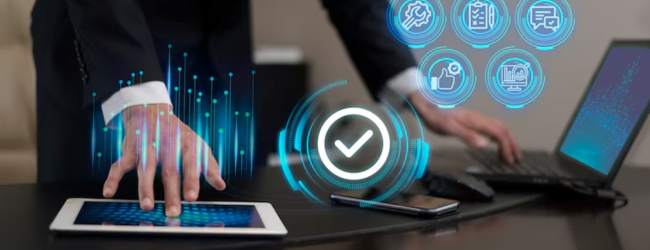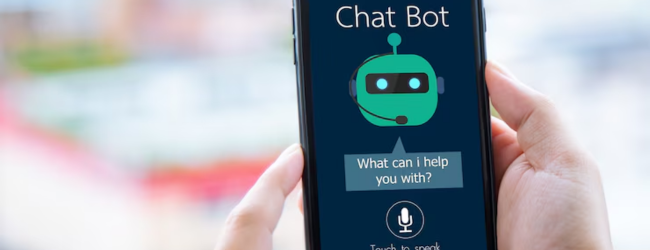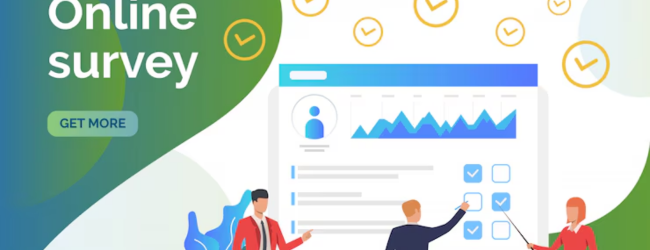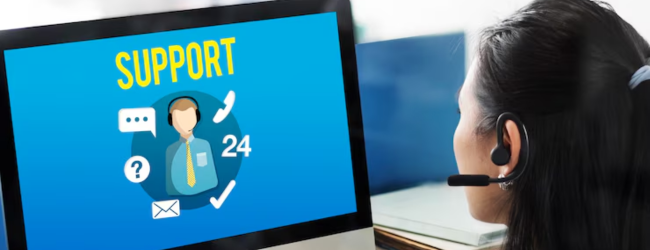Table of contents
In today’s fast-paced world, customers expect instant, personalized service. Meeting these expectations can be challenging, but Customer Experience Automation (CXA) offers a powerful solution. By strategically using technology, businesses can streamline interactions, boost customer satisfaction, and free up human agents for more complex tasks. This guide explores the benefits, examples, and key considerations of CXA.
What is Customer Experience Automation (CXA)?
Customer Experience Automation (CXA) involves using technology to optimize and personalize every stage of a customer’s journey with a brand. This goes beyond simple automation; it’s about creating seamless, timely, and relevant experiences powered by customer data. CXA aims to make interactions feel effortless and even proactive, anticipating customer needs before they arise.
Benefits of Customer Experience Automation

- Enhanced Customer Satisfaction: Customers get faster responses, 24/7 availability, and consistent service across all channels. They don’t have to repeat themselves or wait for answers.
- Increased Operational Efficiency: Automation handles routine inquiries, freeing up human agents to focus on complex issues. This reduces costs and improves agent job satisfaction.
- Personalization at Scale: CXA allows businesses to treat thousands of customers as individuals. By analyzing data, it can tailor recommendations, communications, and offers to specific preferences.
- Valuable Customer Insights: CXA platforms gather data about customer behavior, preferences, and pain points. This information can be used to improve products, services, and marketing strategies.
- Proactive Problem Resolution: Advanced CXA systems can identify potential issues before they impact customers, allowing for proactive communication and solutions.
Examples of Customer Experience Automation
1. AI Chatbots

- Functionality: AI-powered chatbots use natural language processing (NLP) and machine learning (ML) to understand and respond to customer inquiries via text or voice. They can be integrated into websites, apps, and messaging platforms.
- Detailed Breakdown:
- Instant Support & 24/7 Availability: Unlike human agents, chatbots are available around the clock, providing immediate assistance regardless of time zone or business hours. This is crucial for urgent queries or customers who prefer self-service.
- Answering Frequently Asked Questions (FAQs): Chatbots are excellent at handling common questions about products, services, shipping, returns, and basic account information, freeing up human agents from repetitive tasks.
- Guiding Through Simple Processes: They can walk customers through processes like password resets, order tracking, basic troubleshooting, and form completion.
- Lead Generation & Qualification: Chatbots can engage website visitors, ask qualifying questions, and route potential leads to the sales team.
- Personalized Interactions: More advanced chatbots can access customer data to provide personalized recommendations, greetings, and responses.
- Seamless Escalation: When a query becomes too complex for the chatbot, it can seamlessly transfer the conversation to a human agent, often providing the agent with the conversation history for context.
- Impact on CX: Improves speed of response, convenience, and accessibility of support. Reduces wait times and can handle a high volume of inquiries simultaneously.
ALSO READ | How to Run Ads on Instagram | A Complete Guide
2. Automated Emails
- Functionality: Triggered by specific customer actions or events, automated emails deliver timely and relevant information without manual intervention.
- Detailed Breakdown:
- Order Updates & Shipping Notifications: Keep customers informed about their purchase status, from confirmation to shipment tracking and delivery updates, enhancing transparency and reducing anxiety.
- Abandoned Cart Reminders: Automatically remind customers about items left in their shopping carts, often including incentives like discounts to encourage completion of the purchase.
- Welcome & Onboarding Sequences: New customers receive a series of emails introducing the brand, its products/services, and how to get started, fostering engagement and understanding.
- Personalized Offers & Recommendations: Based on past purchases, browsing history, or profile data, automated emails can suggest relevant products or special offers, increasing the likelihood of repeat purchases.
- Birthday & Anniversary Emails: Sending personalized greetings and potential discounts on special occasions can build customer loyalty and create a positive brand association.
- Re-engagement Campaigns: Target inactive customers with special offers or relevant content to encourage them to return.
- Feedback Requests: Automatically send surveys after a purchase or interaction to gather valuable insights.
- Impact on CX: Provides timely information, personalized experiences, and encourages engagement and loyalty.
3. Automated Feedback Surveys

- Functionality: Systems automatically trigger surveys to customers after specific interactions or milestones in their journey.
- Detailed Breakdown:
- Post-Purchase Surveys: Gather feedback on the purchase experience, product satisfaction, and delivery.
- Post-Interaction Surveys: Collect feedback after a customer service interaction (e.g., chat, phone call) to assess agent performance and identify areas for improvement.
- Net Promoter Score (NPS) Surveys: Regularly gauge customer loyalty by asking how likely they are to recommend the brand.
- Milestone Surveys: Trigger surveys after a certain period of product usage or subscription duration to understand long-term satisfaction.
- Branch-Specific Feedback: For businesses with physical locations, surveys can be triggered after a store visit.
- Automated Analysis & Reporting: Some systems include basic analysis features to identify trends and key areas of concern from survey responses.
- Impact on CX: Demonstrates that the business values customer opinions, provides actionable insights for improvement, and allows for timely intervention if a customer had a negative experience.
💡Pro Tip: If you want to start a business but have too many doubts, connect with a business expert from Boss Wallah for guidance – https://bw1.in/1116
4. Automated Appointment Scheduling
- Functionality: Allows customers to book appointments or service slots online without needing to call or email.
- Detailed Breakdown:
- Self-Service Booking: Customers can view available time slots and book appointments at their convenience, 24/7.
- Automated Reminders: Systems send automated email or SMS reminders to customers before their scheduled appointments, reducing no-shows.
- Calendar Integration: Appointments are automatically added to the business’s calendar and the customer’s personal calendar.
- Rescheduling & Cancellation Options: Customers can often reschedule or cancel appointments online, offering flexibility.
- Personalized Availability: Some systems can offer personalized appointment slots based on customer history or preferences.
- Impact on CX: Increases convenience, reduces friction in the scheduling process, and minimizes missed appointments.
5. Personalized Recommendations
- Functionality: AI algorithms analyze customer data (browsing history, purchase history, preferences, demographics) to suggest relevant products, services, or content.
- Detailed Breakdown:
- Product Recommendations on E-commerce Sites: Displaying “Customers who bought this also bought…” or “Recommended for you” sections based on individual browsing and purchase patterns.
- Content Recommendations: Suggesting relevant articles, blog posts, videos, or courses based on past engagement.
- Personalized Email Marketing: Including product recommendations tailored to individual customer interests in automated email campaigns.
- In-App Recommendations: Suggesting features or content within a mobile app based on user behavior.
- Dynamic Website Content: Displaying different content or offers to different users based on their profiles and behavior.
- Impact on CX: Enhances discovery, provides value by suggesting relevant items, and can increase sales and customer engagement.
6. Automated Order Tracking Notifications
- Functionality: Automatically updates customers on the status of their orders through email or SMS.
- Detailed Breakdown:
- Confirmation Emails: Sent immediately after an order is placed, providing order details and confirmation numbers.
- Shipping Updates: Notify customers when their order has shipped, including tracking information and estimated delivery dates.
- Out-for-Delivery Notifications: Inform customers when their package is expected to arrive soon.
- Delivery Confirmation: Notify customers upon successful delivery.
- Proactive Issue Updates: If there are delays or issues with the shipment, automated notifications can inform the customer proactively.
- Impact on CX: Increases transparency, reduces customer anxiety about their orders, and minimizes the need for customers to contact support for tracking information.
ALSO READ | Models of Consumer Behaviours: Definition, types and Stages
7. Automated Content Delivery
- Functionality: Automatically distributes relevant content to customers based on their preferences or actions.
- Detailed Breakdown:
- Newsletter Subscriptions: Automatically send newsletters to subscribers based on their chosen frequency and topics.
- Blog Post Updates: Notify customers when new blog posts relevant to their interests are published.
- Product Updates & Announcements: Automatically inform customers about new product releases or feature updates.
- Educational Content: Deliver relevant guides, tutorials, or resources based on a customer’s product usage or stage in their journey.
- Impact on CX: Keeps customers informed, provides value through relevant information, and builds brand engagement.
8. Customer Support Ticketing Automation

- Functionality: Automates the process of managing and routing customer support inquiries.
- Detailed Breakdown:
- Automatic Ticket Creation: When a customer contacts support (via email, chat, or phone), a ticket is automatically created in the system.
- Categorization & Prioritization: AI can analyze the content of the inquiry to automatically categorize it and assign a priority level.
- Intelligent Routing: Tickets are automatically routed to the most appropriate agent or team based on the issue type, agent expertise, and availability.
- Automated Responses for Common Issues: For very basic inquiries, the system might provide an automated response with relevant information before involving a human agent.
- Service Level Agreement (SLA) Management: Automation helps ensure that tickets are addressed within defined timeframes.
- Automated Closure: Once an issue is resolved and the customer confirms satisfaction, the ticket can be automatically closed.
- Impact on CX: Ensures efficient handling of support requests, reduces response times, and connects customers with the right support resources quickly.
Challenges and Considerations in Customer Experience Automation
- Maintaining Personalization: It’s crucial to avoid generic, impersonal interactions. Use data and AI to tailor automated responses.
- Handling Complex Inquiries: Ensure a seamless transition to human agents when automated systems can’t resolve an issue.
- Ensuring Accuracy and Reliability: Regularly monitor and refine automated processes to minimize errors.
- Integration Across Channels: Provide a consistent experience across all communication channels (email, chat, social media, phone).
- Data Privacy and Security: Protect customer data and comply with privacy regulations.
- Balancing Automation with Human Touch: Understand when human interaction is necessary and prioritize empathy and active listening.
Need Expert Guidance?
Starting a business can be challenging, but you don’t have to do it alone! At Boss Wallah, our 2,000+ business experts are ready to provide valuable insights and guidance. Whether you need help with marketing, finance, sourcing, or any other area of any business, our business experts are here to help you succeed- https://bw1.in/1116
Confused about Which Business to Start?
Want to start your own business but unsure which one to choose? Explore Boss Wallah, where you’ll find 500+ courses by successful business owners, featuring practical, step-by-step guides on starting and growing various businesses. Find your perfect business idea today – https://bw1.in/1111
Conclusion
Customer Experience Automation is no longer a futuristic concept; it’s a necessity for businesses that want to thrive in today’s customer-centric environment. By implementing CXA strategically, companies can improve customer satisfaction, increase efficiency, and gain a competitive edge. The key is to find the right balance between automation and the human touch, ensuring that technology enhances, rather than replaces, the customer experience.
FAQs
1. What exactly is Customer Experience Automation (CXA)?
- CXA is the strategic use of technology to streamline, personalize, and enhance every interaction a customer has with a brand throughout their journey. It goes beyond basic automation to create seamless, timely, and relevant experiences driven by customer data.
2. How is Customer Experience Automation different from traditional customer service?
- Traditional customer service often relies heavily on human agents responding reactively. CXA proactively addresses customer needs, provides instant support for routine inquiries, and personalizes interactions at scale, freeing up human agents for complex issues and more empathetic engagement.
3. What are the key benefits of implementing CXA for a business?
- Key benefits include enhanced customer satisfaction, increased operational efficiency, personalization at scale, valuable customer insights, proactive problem resolution, and ultimately, improved customer loyalty and potential revenue growth.
4. What are some common technologies used in CXA?
- Common technologies include AI-powered chatbots, automated email marketing platforms, CRM (Customer Relationship Management) systems with automation capabilities, feedback survey tools, appointment scheduling software, personalization engines, and customer support ticketing systems with automated routing.
5. Is CXA meant to replace human customer service agents?
- No, CXA is not intended to entirely replace human agents. Instead, it aims to augment their capabilities by handling routine tasks and providing agents with more context and information to handle complex or sensitive issues effectively. A balanced approach combining automation and human touch is often the most successful.
6. How can businesses ensure that CXA doesn’t feel impersonal?
- To maintain personalization, businesses should leverage customer data to tailor automated responses and recommendations. Implement sophisticated AI that can understand context and sentiment. Ensure seamless transitions to human agents when necessary and train those agents to continue the personalized experience.
7. What are some of the biggest challenges in implementing CXA?
- Challenges include maintaining personalization at scale, effectively handling complex inquiries that require human intervention, ensuring the accuracy and reliability of automated systems, integrating CXA across various communication channels, and addressing data privacy and security concerns.
8. How do you measure the ROI (Return on Investment) of CXA?
- ROI can be measured through various metrics such as reduced customer service costs, increased customer satisfaction scores (CSAT, NPS), improved customer retention rates, higher conversion rates from personalized recommendations, and increased efficiency of human agents.


